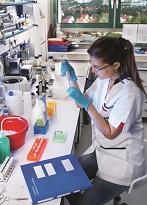
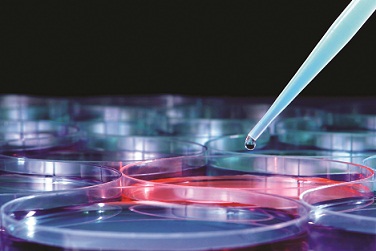 Accelerated initiatives emerging in both Europe and Asia have challenged U.S. dominance in the bioscience industries. In virtually every industry sector, access to breakthrough technology, equipment and to capital has leveled the playing field.
Accelerated initiatives emerging in both Europe and Asia have challenged U.S. dominance in the bioscience industries. In virtually every industry sector, access to breakthrough technology, equipment and to capital has leveled the playing field.
In the current economy, capital markets are affecting industrial biotechnology companies. These economic conditions are impacting not only the manufacturers, but now, vendors and service suppliers as well. Despite the industry’s ability to maintain relative stability during economic downturns, the industry today is more likely to be influenced by events on Wall Street than by technological breakthroughs or product approvals.
Fiscal uncertainty in the U.S. markets, as well as Europe’s recent return to recession, has impacted the industry’s access to capital. These conditions are manifesting themselves by the plummeting of new IPOs and the fact that 30 percent of publicly traded biopharmaceutical companies have less than a six month supply of cash.1
While the level of private funding remains stable, a more analytical view indicates that these are challenging times. Since 2009, mergers and acquisitions appear to be accelerating with jobs in the balance. For example, the 2009 Merck and Schering-Plough merger was projected to cut 13,000 post-merger jobs by the end of 2015.2
The Current Landscape
Out of the mixed economic picture, some of the areas of opportunity that are surfacing include:
• Policies adopted by state, regional and local governments directed toward maintaining a skilled workforce
• Cost containment and expansion measures adopted by manufacturing
• New applications for incubators and economic development centers.
Maintaining the Supply of Workforce Skills
State, regional and locally adopted policies are the foundation for developing and maintaining accelerated levels of biotech-based jobs. From an economic development perspective, adopting policies at the state, regional and local level is good business that generates salary-driven revenues.
Until about the last decade, the undisputed leader in bioscience industry development was the United States. Low-cost labor, speed of information dissemination and available risk capital have rapidly increased global competition for the industry in both Asia and Europe.
Local, state and national government leaders in the United States continue to expand their understanding of this new dynamic of increased competition for developing the biosciences, and they are actively working to develop and promote growth of the industry within their jurisdictions.
With nearly every competitor having access to big breakthroughs in technology, and as well as access to the equipment and capital to produce standardized products, those regions that possess the human capital, with its insights, competencies and experience, have the competitive advantage.
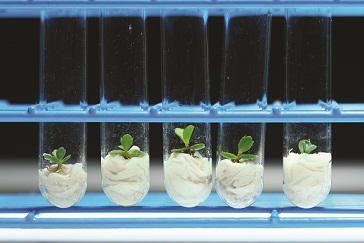 Attracting and retaining a large and sustainable pool of educated (Ph.D., MS, BS, AA) and technically proficient workers is essential to a state aspiring to enhance bioscience industry presence. The creation of two-year associate degree programs, changes in curricula in colleges and universities to better reflect workforce needs, outreach to industry for specialized on-site training have all strengthened the communication for industry development in all areas of company development.
Attracting and retaining a large and sustainable pool of educated (Ph.D., MS, BS, AA) and technically proficient workers is essential to a state aspiring to enhance bioscience industry presence. The creation of two-year associate degree programs, changes in curricula in colleges and universities to better reflect workforce needs, outreach to industry for specialized on-site training have all strengthened the communication for industry development in all areas of company development.
State-level examples of initiatives and legislation that support a technologically competent workforce include:
• Arkansas: Tax credits to employers for training expenses incurred for biotechnology workers
• Massachusetts: Teacher training, biotech lab equipment, supplies in public high schools through the Massachusetts Biotechnology Center’s BioTeach Initiative
• Kansas: The Kansas Economic Growth Act provides $500 million which is being invested over a period of 15 years in the Emerging Industry Investment Fund. This fund utilizes the growth of the state tax base associated with the state’s bioscience industry, research institutions and community colleges to provide the major funding source of the Bioscience Initiative Roadmap.
Using workforce skill levels to drive corporate expansion and attraction, municipalities and counties are also developing articulated agreements, initiatives and partnerships. Stand-out examples of these partnerships include:
• Thirteen counties between Atlanta and Athens, Georgia, have developed a program to sustain workforce development strategies. Known as “The Innovation Crescent,” the alliance’s programming works to sustain workforce development in the life sciences industries. Using “work ready” certificates and work/job ready profiling, the program creates a roadmap from high school through technical colleges to universities.
• Gateway Technical College located in Southeast Wisconsin is actively involved in high-technology customized training. Bryan Albrecht, president of Gateway, states, "Customized training designed to stimulate changes in the local labor force are offered through the classroom and focused boot camps. Gateway offers a Biopharmaceutical manufacturing associate degree and is planning to start a laboratory technician program.”
Manufacturing Cost Containment and Expansion
Unlike many manufacturing segments, biopharmaceuticals are making a solid recovery from the last few years of economic downturn.
The “8th Annual Report and Survey of Biopharmaceutical Manufacturing Capacity and Production”3 conducted by BioPlan Associates, Inc. reported: “This year we find that company budgets are clearly recovering from the recent tightening of the economic belt. However, manufacturers are maintaining their conservative approach to production, and keeping their focus on cost reduction and quality improvements. In this year’s study, the shift in the focus to production quality was particularly apparent. Here, there was an 11 percentage point increase, to 57.1 percent, of global respondents indicating they are seeing operational changes toward production quality.”
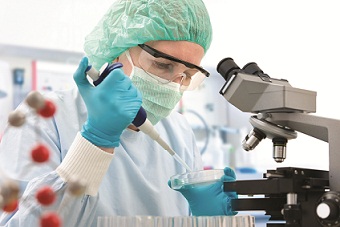 Company budgets are linked to two primary factors:
Company budgets are linked to two primary factors:
1. Increased Focus on Productivity: The largest budget increases are going into areas associated with productivity and quality. This was a change from previous years when most budgets had simply been slashed. Companies are expanding budgets, but are doing so cautiously, with expenditures being critically evaluated. Overall, spending in virtually all budget areas appears to be growing at between one percent and six percent. Company reports indicate that, across all departments, budget constraints have loosened, especially for expenditures that improve process performance. Companies are focusing on productivity by “retooling” and training existing staff resources.
2. Cost Cutting and Cost Containment: Trends in this area indicate biopharmaceutical companies are increasing their outsourcing in areas that reduce costs, or improve productivity. Company budget increases are not being directed toward rebuilding in-house staff that had been reduced or eliminated in recent years. Key tasks, such as manufacturing, are being outsourced at a growing and steady pace. In general, outsourcing by biopharmaceutical companies, including contract testing and manufacturing companies, appears promising. This is particularly true for the more sophisticated and broadly capable contractors.
New Applications for Incubators and Economic Development Centers
By the early 2000s, governors and legislators in almost every state recognized commercialization of university research and support for small business innovation as a valuable means of economic development. Through the recent economic downturn, lawmakers and state agencies have continued to appreciate and support a broad range of initiatives that foster bioscience industry growth.
Some states have established and funded privately run organizations dedicated to promoting bioscience investment, entrepreneurship and new product development. Such organizations are often supported by, or operate, as an extension of state economic development agencies.
Other states and regions have adopted more modest strategies while maintaining a broader tech focus. Regardless of the strategy, virtually every state recognizes the financial payoff from fostering the unique conditions needed to attract and grow biotech innovation, generally known as the "incubator model."
Biotechnology incubators support early-stage companies in a number of ways: providing access to investors, managerial support, and often laboratory and office space. The incubator facilities generate a return on their investment through equity shares in the sponsored companies.
More broadly speaking, states and municipalities see a benefit in the form of tax revenue that comes from both company profits and the expanding workforce needed to staff successful ventures. In addition, the bioscience industry creates a higher than normal indirect employment ripple in terms of jobs generated by essential service industries.
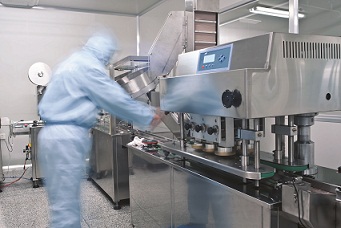 Here are several state-supported organizations that are focused on supporting bioscience industry development:
Here are several state-supported organizations that are focused on supporting bioscience industry development:
• The Maryland Biotechnology Center, created in 2009 by Governor Martin O'Malley is one of the first initiatives of BioMaryland 2020, the State Strategic Plan for Life Sciences delivered by the Maryland Life Sciences Advisory Board. The Center connects researchers with service providers and investors to minimize the challenges associated with developing scientific discovery into a commercial product.
• The Virginia Biosciences Commercialization Center focuses on commercialization of later-stage bioscience companies looking to launch their product by providing consultation from scientific, clinical and industry experts, along with access to financial support opportunities.
• The North Carolina Biotechnology Center is a private, nonprofit organization created by the North Carolina legislature in 1984. The Center provides business loans, support for collaborative research projects and assistance aimed at connecting early-stage companies with larger corporations and access to investors.
• The New Orleans BioInnovation Center provides support and guidance to emerging biotechnology companies, primarily derived from New Orleans-based universities. The facility caters to a broad scope of companies, ranging from pre-startups to maturing and expanding businesses. The center is a 66,000-square-foot biotech business incubator containing wet-labs, office and conference space.
Challenges: Clouds on the Horizon
One cloud on the horizon is the introduction of biosimilar products. As these are introduced, they may significantly increase the number of drug products and companies in coming years. To regulate the new products, the U.S. joined other major market countries in establishing a biosimilar approval mechanism. While it will require a few more years to fully implement, over a dozen biosimilars have been approved in the European Union.
Compared to generic drugs, biosimilars are likely to be much less of a threat to established manufacturers. Unlike generic drugs, few true biogenerics (i.e., products presumed to be the same, with automatic substitution for their reference products allowed) will be approved in the U.S. and other major markets in coming years. Price discounts by biosimilars will be much smaller, because biologics tend to be more expensive to manufacture than generic small-molecule drugs.
Unlike the disruptive impact generic small molecule drugs have had, biosimilars will not dramatically disrupt established biopharmaceutical markets.
Despite this, biosimilars will result in a significant expansion of the number of biopharmaceutical products and companies. For every successful product coming off-patent, there will likely be multiple biosimilars in the marketplace. This will result in an increase in biopharmaceutical manufacturers and marketers worldwide, and a higher demand for experienced staff, equipment and management.
However, getting biosimilars to the market will not be an easy task. With few precedents, regulatory approvals are not assured. Other threats to biosimilars could include older reference products being withdrawn from the market, or replaced, as biosimilar competition approaches. This may make comparative testing difficult, resulting in the need for clinical trials for biosimilar approval.
Summary
In contrast with some mainstream pharmaceutical industry segments, biologics today are trending toward increased growth and profitability. Trends affecting the biopharmaceutical industry include increased state, regional and local initiatives aimed at developing and maintaining a skilled workforce, increasing company budgets and having an expanded presence of biotechnology-centered incubators and economic development centers. This will result in an increase in the number of biopharmaceutical products and companies present in the market in coming years.
Currently, there are about 425 biopharmaceuticals in the U.S. and European Union. With a rapidly increasing base of knowledge, technological advances, successful and improving manufacturing economics, biopharmaceuticals are a bright spot within the pharmaceutical industry. In 2011, biopharmaceuticals provided around 15 percent of pharmaceutical industry revenue. This will increase rapidly in coming years, with an estimated 40 percent of pharmaceuticals currently in development being biopharmaceuticals.
Footnotes:
1 Biotechnology Industry Organization (BIO), http://www.bio.org/.
2 Chemistry World, http://www.rsc.org/chemistryworld/News/2011/August/03081102.asp
3 BioPlan Associates, Inc., http://www.bioplanassociates.com/publications/bmcp.htm
Further References:
• “Biomanufacturing Morphs” by BioPlan Associates, Inc., PharmaManufacturing.com,
http://www.pharmamanufacturing.com/articles/2011/093.html
• “How States Can Foster and Expand Biotech Industry Development,” Biotechnology Industry Organization (BIO), http://www.bio.org/articles/how-states-can-foster-and-expand-biotech-industry-development.

